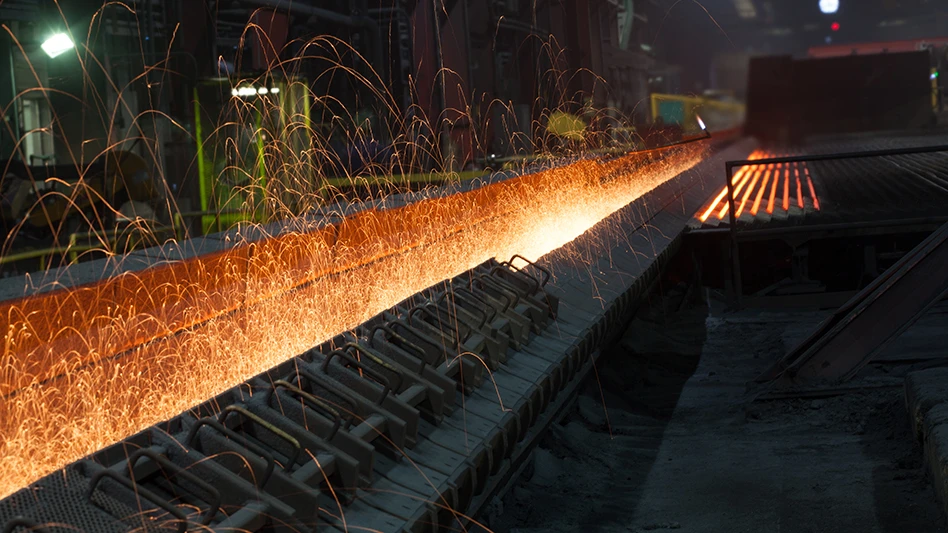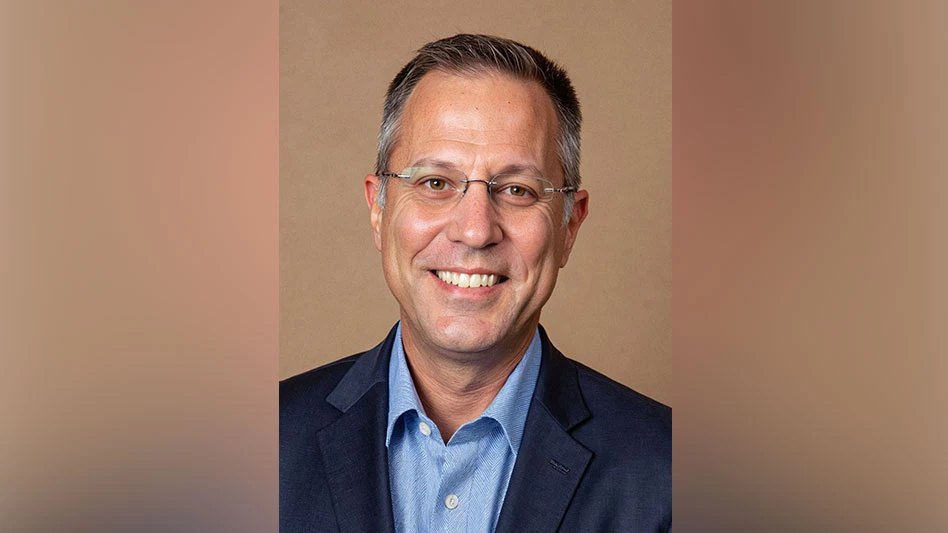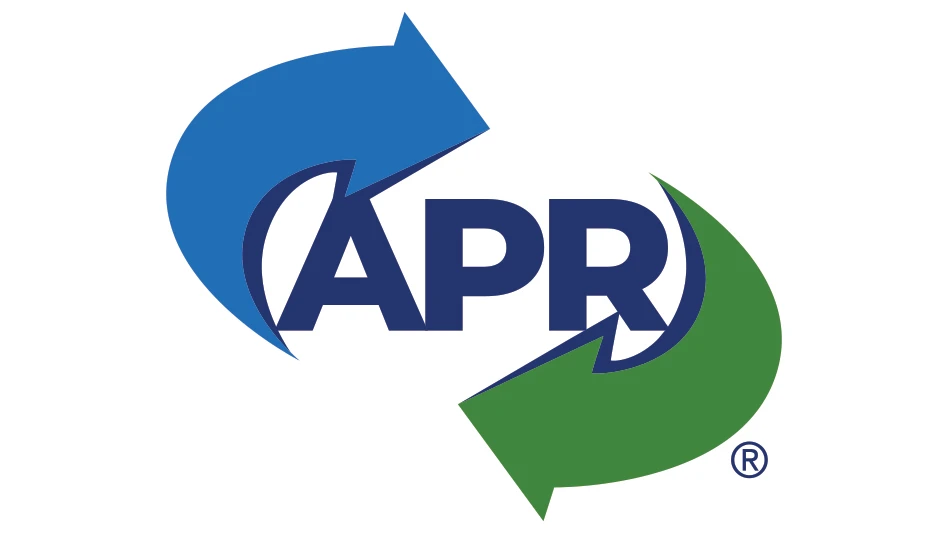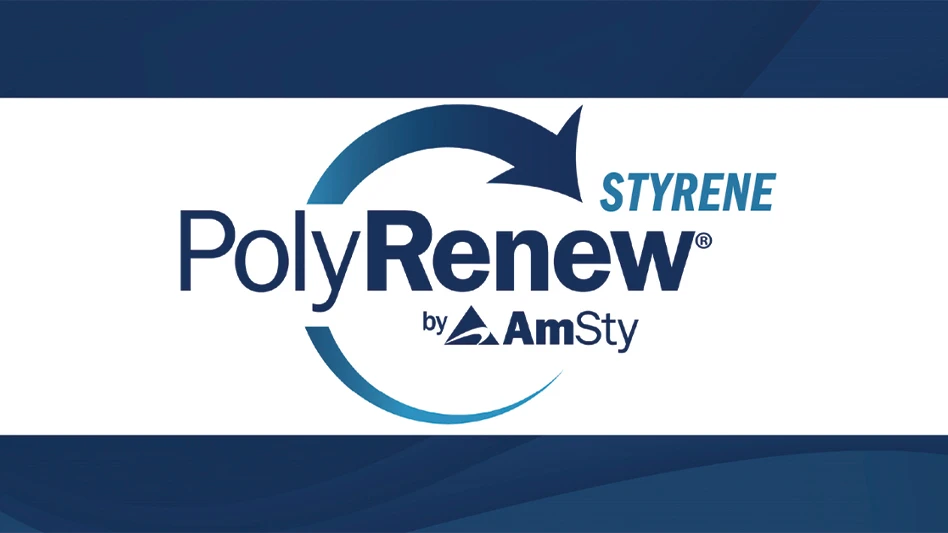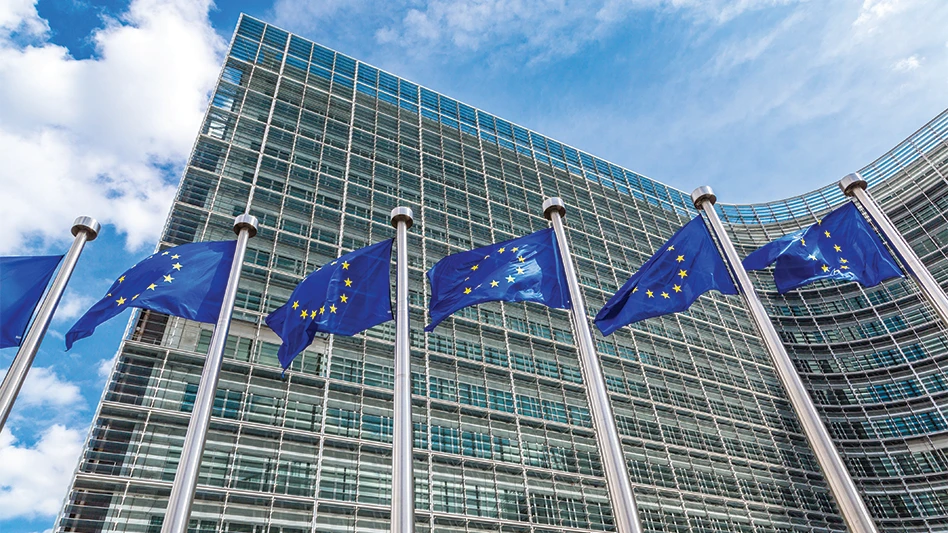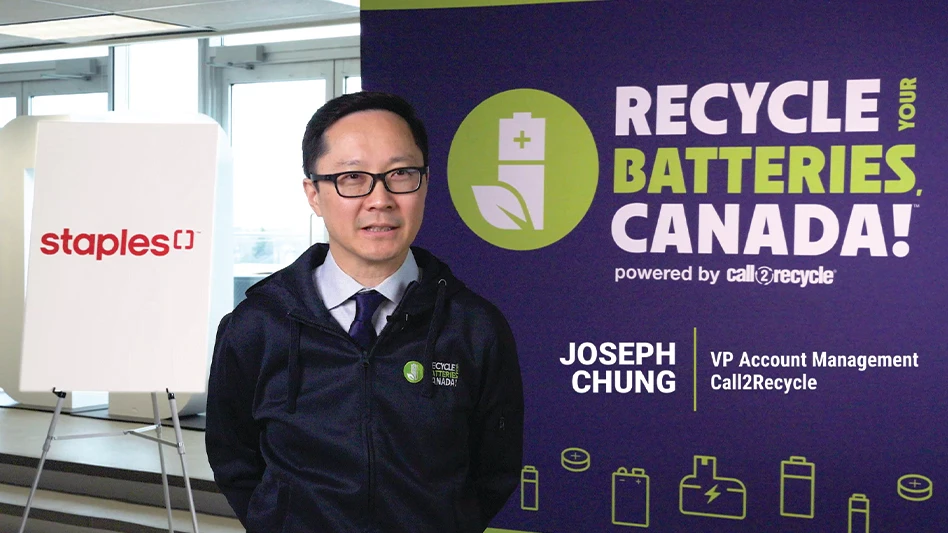
Scott Saunders recently marked his 30th year with KW Plastics, a polypropylene (PP) and high-density polyethylene (HDPE) recycler based in Troy, Alabama.
Since leaving the metals recycling sector in 1994 to join KW’s newly formed plastics division as its director of raw material procurement, he has had a front-row seat to an ever-changing industry.
That evolution has provided excitement and motivation.
“We were always just considered a lower-cost alternative to virgin resin in the molding space, and now we work directly with consumer product companies trying to get PCR [postconsumer resin] into more and more of their applications,” Saunders says. “That’s an exciting change away from us just being more of a commodity-type cost-based solution to a sustainability solution, keeping in mind the cost structures that we’re battling against on the virgin resin side. It’s very exciting to see how the industry has evolved and changed.”
Saunders’ role at KW has evolved along with the industry. He became the company’s director of raw material procurement and resin sales in 2002, and in 2007, was named general manager—his current role.
He also is active in industry groups, serving as plastics division director for the Washington-based Recycled Materials Association as well as sitting on the Colorado Department of Public Health and Environment’s extended producer responsibility (EPR) advisory board.
KW has continued to expand its recycling capabilities while sourcing material throughout North America. Boasting what it claims is the industry’s largest capacities for blow molding, injection molding, extrusion and blown film, its facility features more than 100 million pounds of silo capacity and more than 750 million pounds of annual processing capacity. Within the past two years, it has committed to adding additional extruders and wash lines to its operation.
Saunders has applied lessons he’s learned over three decades as KW and the plastics recycling sector have grown.
“I think the most important thing is to take a long-term view and don’t really get pulled into the hot topic of the day because that certainly can change,” he says. “If we try to take care of our customers, we try to take care of our suppliers and we try to do what we say, in the long run, that seems to pay dividends for us.”
In the following interview, which has been edited for clarity and conciseness, Saunders provides further insight into the evolution of KW and the plastics recycling industry, as well as the issues facing them.
Recycling Today (RT): Coming from the metals recycling industry, are there any lessons you learned then that you found also applied to plastics?

KW Plastics
Scott Saunders (SS): When we were getting our legs under us in the mid-’90s [at KW Plastics], our competition was really dominated by big chemical companies. Union Carbide had a facility in New Jersey, Phillips Petroleum had a facility in Oklahoma and Quantum Chemical had a facility in Ohio, [for example]. It was these dominant chemical players that had built these mechanical recycling facilities, and they really dominated the marketplace.
We came in as the first company really out of the metal side of recycling that treated the supplier like a customer. We were one of the first to understand the scarcity of the material and that you had to really treat that supplier like a customer and build that relationship. That gave us a big competitive advantage because our competition at the time treated the bale supplier like they would a supplier for forklifts or any equipment they would purchase. They would want a proposal, then they would want them to negotiate with them and treat them poorly, and some of the things you might see happening in a supply relationship where we’ve got many people trying to supply a product, and that’s not the case in our business.
RT: Comparing when you started at KW with where you are today, what are some of the biggest changes you’ve noticed in the plastics industry over that time?
SS: The biggest sea change would be that we had no relationships in our industry with our ultimate customer, which was the consumer product companies—be that the manufacturer of a car or the manufacturer of shampoo—and now we do. That’s a big change on how we participate in the marketplace.
RT: What did it take to develop those relationships?
SS: It took many years of attacking the problem, and then it took a change in the attitude of those companies. I’ll tell a little “tongue in cheek” story. We used to have to sign NDAs [non-disclosure agreements] because people did not want their customers or competitors to know they were using recycled materials, and now we have to sign NDAs because people don’t want their competitors to know where their source of raw material is. It’s really a sea change in that regard.
Recycled materials 30 years ago were seen as poor-quality, only a solution for very low-end products, and that is not the case today at all.
RT: What sets KW apart as a recycler? What initiatives have taken place in recent years that you’re most proud of?
SS: I think the fact that we view ourselves as a resin company that simply uses the recycled molecule as our feedstock [helps us stand out]. We are not tied to a particular product. Where many of our competitors are sourcing material for one application—be that piping or bottles or flowerpots or whatever—we will purchase materials that will operate in our design system at scale.
We started off attempting to process natural [HDPE], then we couldn’t get natural because there were too many competitors, so we went to mixed color [HDPE]. We developed that market, which allowed us to get into the natural [market]. We developed the propylene tub and lid market, which allowed us to then segue into bulky containers. For us, we see beauty in some of these uglier, more difficult-to-process items and try to figure out a solution for that problem for the MRF [material recovery facility] industry. We continue to look for materials coming into the MRF at scale that have the potential for processing with the equipment we have designed and developed over the years.
We’re processing over a half-billion pounds [of material] a day. We would love to be a billion-pound company, and I think we’ve got the wherewithal and desire to do that if we can find and get those materials out of the solid waste stream and get them into the recycling stream.
RT: In recent years there have been some additions to capacity at your facility. Are there plans to add more?
SS: We continue to try to stay ahead of collection. We always want our customers or suppliers to have a home for the material. What we do not ever want to do is have to tell a supplier we can’t take it because we’re at capacity and booked up. We had to do that some during COVID because we had some pretty rapid growth and that’s the first time in the history of our company that we’ve had to do that. So, we’ve added a couple of wash lines to give us a capacity in advance of what is being collected.
We’ve got extruders that we’ve added so when we’re finished with this last wash line we started a year or so ago, we’re going to have a wash capacity of 750 million pounds. That’s about 150 million [to] 170 million pounds above what we’re able to purchase today. If we see some growth in raw materials—and we hope we do, based on what’s announced out of some of the big MRF guys and their investments—then we’ll add more capacity. We’ll continue to do that and to try to stay ahead of what’s coming. But none of us know [for sure], because we don’t really control that.

RT: What are some additional keys to KW’s success?
SS: I think the fact that we are locally owned by gentlemen that are career recyclers, that we’ve got very stable ownership that understands the ups and downs of the business and the risk involved [helps], and that allows us to take a very long-term view of our projects and what we’re doing.
We’ve seen a lot of competitors come and go. We’ve seen a lot of customers get into the business and then get out of the business and a lot of sea changes. The way that we are structured and the way that we’re committed to the business over the long term I believe gives us a big benefit to ride out the ups and downs of these marketplaces.
Sponsored Content
Labor that Works
With 25 years of experience, Leadpoint delivers cost-effective workforce solutions tailored to your needs. We handle the recruiting, hiring, training, and onboarding to deliver stable, productive, and safety-focused teams. Our commitment to safety and quality ensures peace of mind with a reliable workforce that helps you achieve your goals.
RT: When it comes to recycling programs, will legislation such as EPR work on a state-by-state basis, or will it take a national program of some kind to raise collection rates?
SS: We don’t need to reinvent the solid waste management system; none of these new ideas have to be antibusiness or antigrowth. Some of the proposals put forward from some environmental NGOs [nongovernmental organizations] are about limiting the amount of plastic packaging or limiting the growth of the economy. What we’ve done unsuccessfully today is we’ve taken a solid waste management system that was designed in the 1940s and 1950s when the household had a little paper and mainly organics and maybe some tin cans, and we’ve really not changed that system dramatically [since].
Now, landfills have become more environmentally friendly, but it’s still a basic system of a hole in the ground, and you put this residue of a modern life, I call it, into that hole in the ground and you bury it and hope to forget about it.
Well, what has changed since then is we have evolved out of glass and evolved out of steel and out of paper into aluminum cans and into plastic packaging, which is a much better option 99 percent of the time for food safety and food storage. It’s a very efficient means of distribution. But we have not really managed the end-of-life part. Some of that efficiency that the economy has gained on plastic packaging on initial distribution is going to have to be reinvested on the back end to get those valuable commodities collected. There is nothing more efficient than the linear economy where you punch a hole in the ground and you pull gas out, or you pull oil out, create a product and drop it back into the ground. That is extremely low-cost and extremely efficient, but that doesn’t mean for the long-term health of the country and the economy and the world that that’s necessarily the best way to do it.
As our packaging gets more sophisticated and our awareness of what some of these things can do to the environment at the end of their life [grows], we’ve got to evolve our system to collect that material and get it returned back into the supply stream.

RT: What are your hopes for the EPR program in Colorado?
SS: I’m a huge advocate for these [EPR] programs, not just in Colorado. When you have materials with a history of success, like PET [polyethylene terephthalate] or natural and mixed color [HDPE], we could at least double the amount of material collected—a lot of times in existing infrastructure—without massive investment, and it’s a viable marketplace.
We focused on some of these rural states like my state, Alabama, or Colorado, which probably has an 8 percent or 10 percent recycling rate for containers. If we took that to 30 percent or 40 percent, that’s a huge success. I think you can do it without tremendous investment and cost overrun for those consumer product companies. If we try to ... immediately tackle multilayer packaging and some of these flexible items that don’t yet have established markets, it’s going to be very expensive and I’m not sure where that material is going to go after it’s collected unless it’s incineration or a chemical recycler.
I advocate for picking the low-hanging fruit first, having easy successes and getting those up and running over the first two to three years of the program. Use that success to grow the program and then get into the more difficult items. ... I think if we focused on that we could have a lot of success without expenses and a lot of funds and do some good work.
Get curated news on YOUR industry.
Enter your email to receive our newsletters.
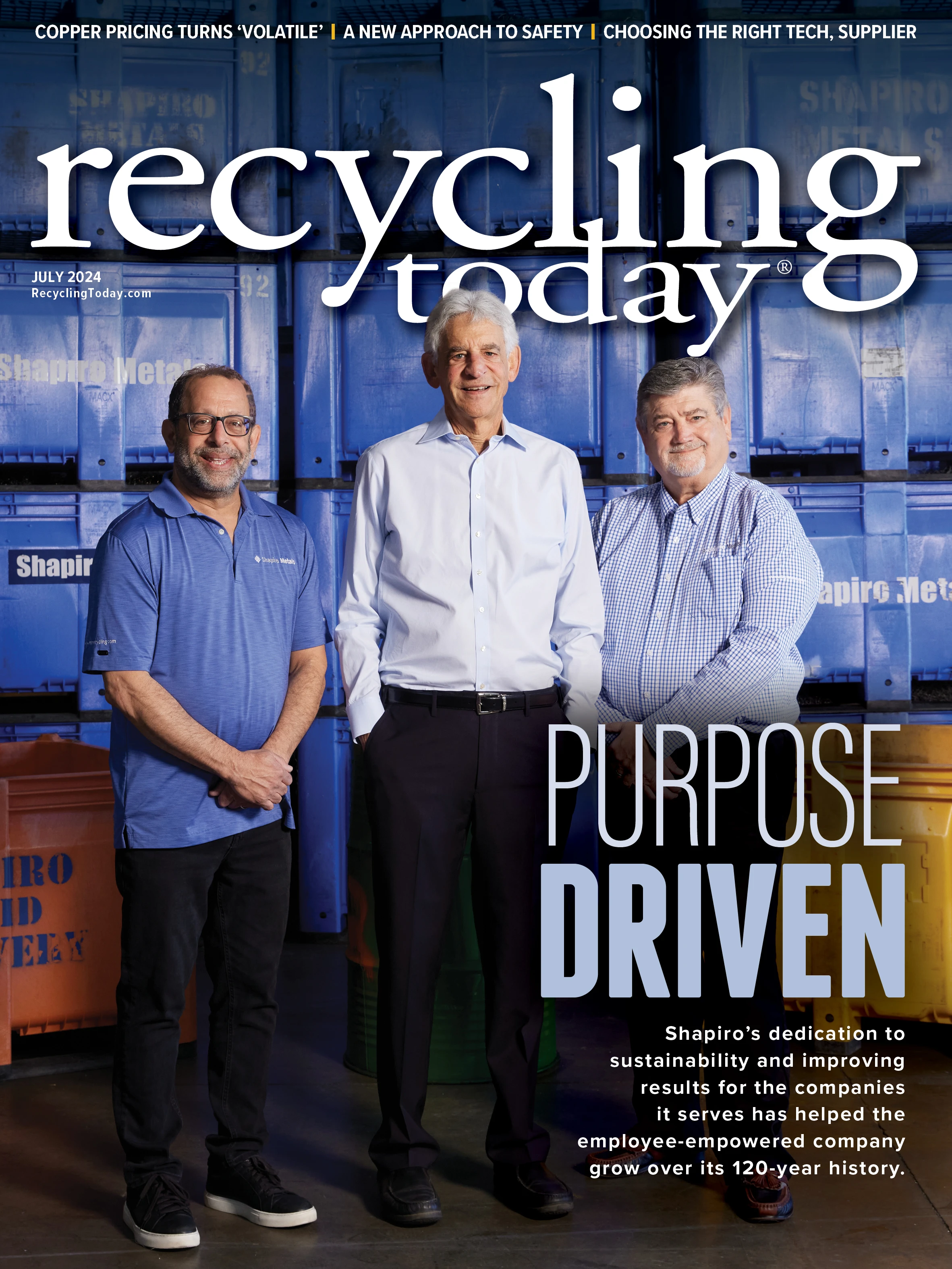
Explore the July 2024 Issue
Check out more from this issue and find your next story to read.
Latest from Recycling Today
- GreenMantra names new CEO
- Agilyx says Styrenyx technology reduces carbon footprint in styrene production
- SABIC’s Trucircle PE used for greenhouse roofing
- Hydro to add wire rod casthouse in Norway
- Hindalco to invest in copper, aluminum business in India
- Recycled steel price crosses $500 per ton threshold
- Smithers report looks at PCR plastic’s near-term prospects
- Plastics association quantifies US-EU trade dispute impacts


